
By Judy Carmack Bross

The Newberry Library.
“We want to blow open the doors to the Newberry, through public programs, exhibitions, research and the amazing materials in our collections,” Astrida Orle Tantillo, appointed the Newberry Library’s tenth President and Librarian in October, told Classic Chicago. “I see the opportunity to open our doors in friendship, a friendship that welcomes teaching and listening and even disagreements. We are not just about the past, we want to show that the humanities are alive and growing.”
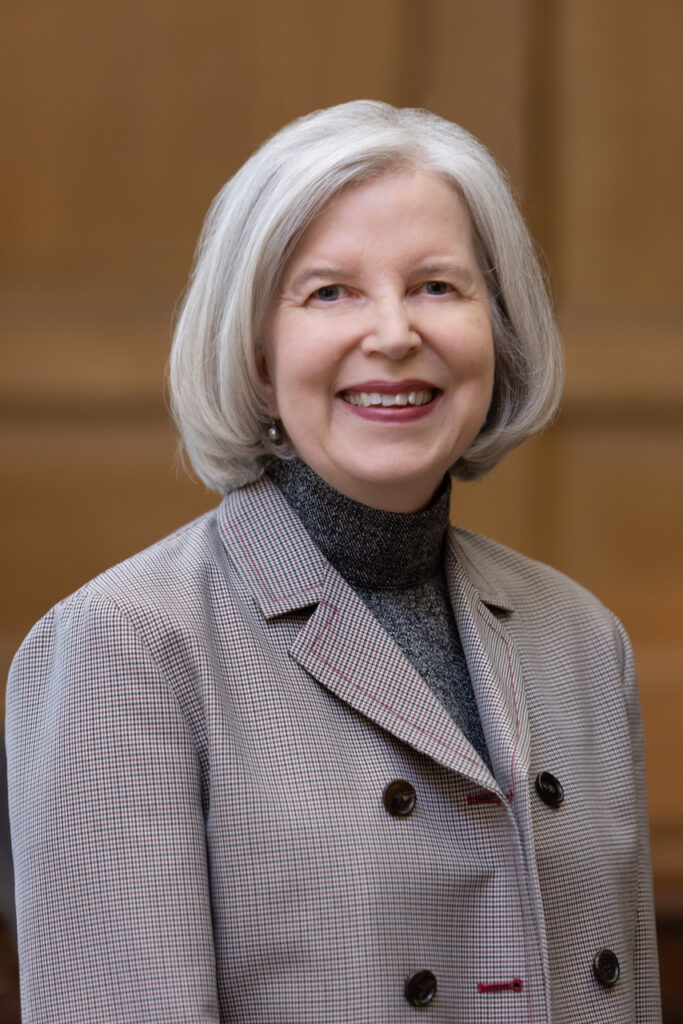
Astrida Orle Tantillo, President and Librarian of the Newberry Library.
As we entered the Newberry on that impossibly sunny Thursday last week to view Indigenous Portraits Unbound in the Hanson Gallery through March 30, we saw Tantillo’s magic at work.
The lobby was alive with curators and staffers talking with visitors, a few students, some of high school age, and real engagement and joy were in the air. From the street the iconic 1887 Henry Ives Cobb Romanesque Revival building has a “shush, please” feel but the authentic excitement of those present made it very welcoming, a place for lively engagement.
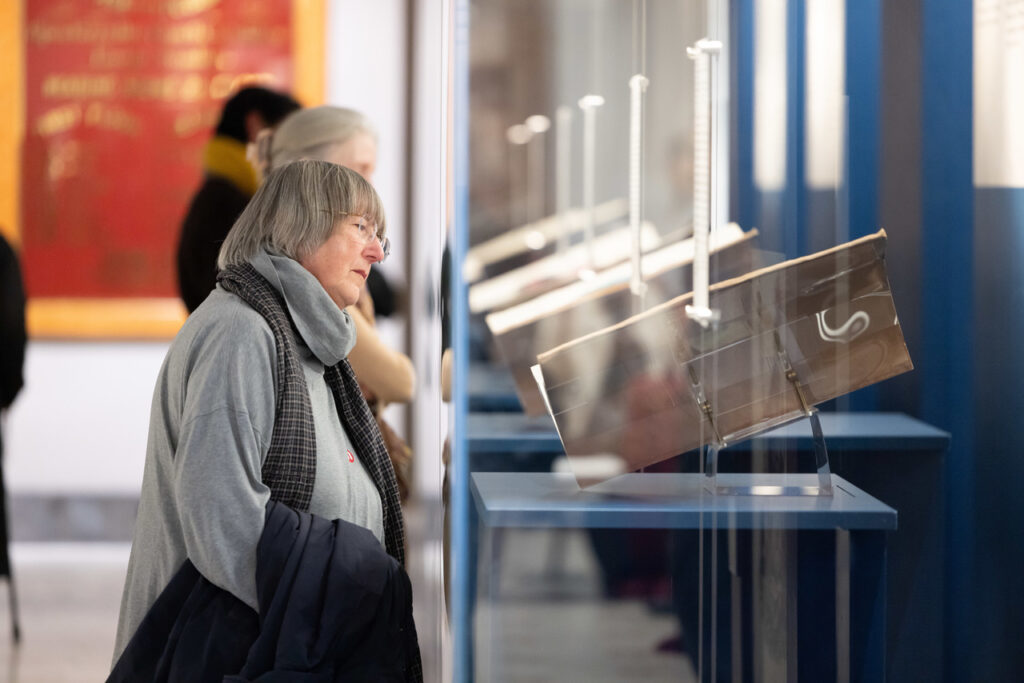
Visitors to the current exhibition view the Indigenous portraits.
Tantillo’s vision includes broader public exposure and welcoming in more visitors. “We want more people to learn about the humanities. We want to showcase our important books, maps, and other materials and in addition offer films, classes, authors’ presentations and prizes, and more community events as well as continued digitization of our collections,” she said. “Not only do we want new audiences to know about us, we want to learn from our community. Education is not a one-way street.”
Tantillo told us that Indigenous Portraits Unbound, taken from one of the most influential and expensive books published in the United States before the Civil War and featuring hand-colored lithographs, speaks to her goals of representing a larger community and bringing in broader audiences. Thomas McKenney and James Hall’s History of the Indian Tribes of North America, published between 1837 and 1844, features 120 portraits of Indigenous people, mostly tribal leaders visiting Washington, DC, as part of official delegations to the federal government. An interesting Chicago connection noted in the exhibition is that Stephen Gale, who founded Chicago’s first bookstore in 1835 on South Water Street, was one of the agents who sold the outsized book to 1250 Americans and Europeans by subscription.
Curated by Will Hansen, Roger and Julie Baskes Vice President for Collections and Library Services, and Curator of Americana, the exhibition shows the work as it is rarely seen, in its original form of publication: in twenty fascicles, large pamphlets intended to be dismantled and reassembled into more permanent bindings by their purchasers. Accompanying notes to viewers state: “While the fascicles were produced and distributed in a time of great upheaval, dispossession, and conflict for Indigenous peoples in the United States, many of the images they contain have remained a source of intertribal solidarity and pride.” Whenever possible, the accompanying labels were written or approved by representatives of the portrait subjects’ tribal nations.
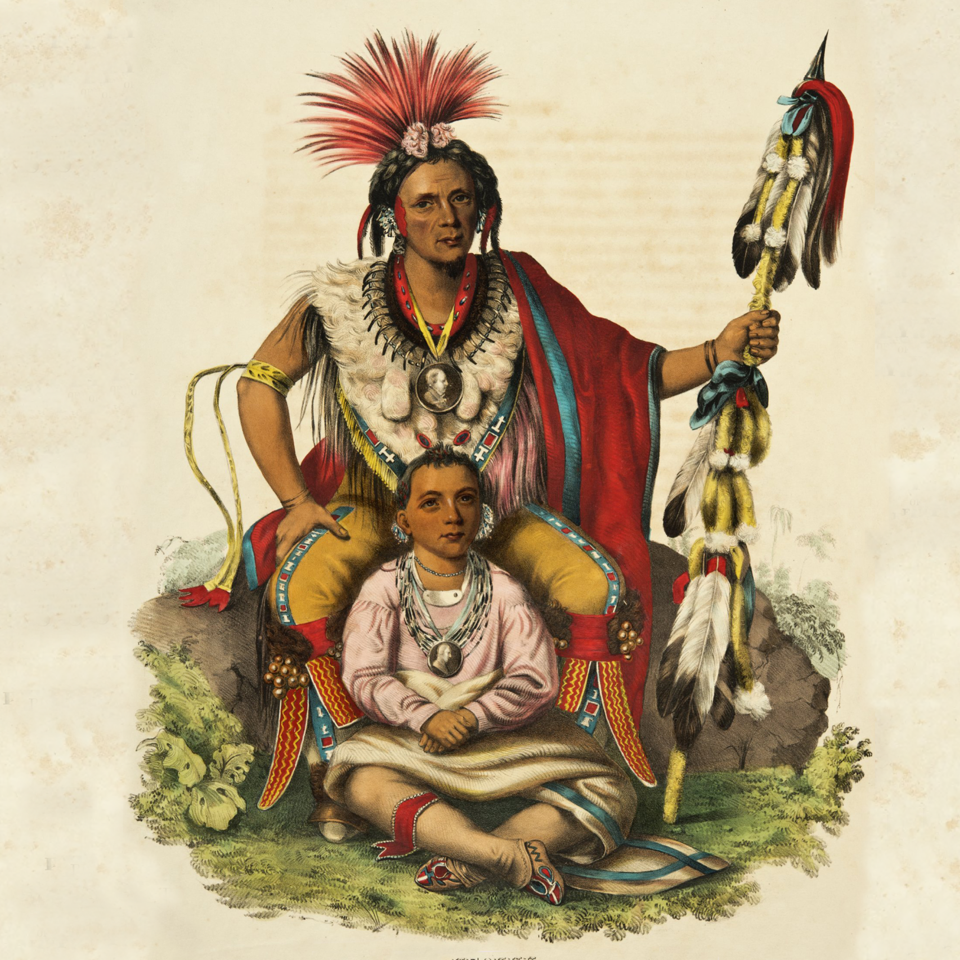
J.T. Bowen (1801—1856?), lithographer; after Charles Bird King (1785—1862), painter
Keokuk, Chief of the Sacs and Foxes
Philadelphia: F.W. Greenough, 1838
Hand-colored lithograph and letterpress text
Anonymous gift
“Keokuk was a leader of the Thâkîwaki or Sauk people. A renowned orator and warrior, he consistently argued for peace with the United States, including in opposition to Black Hawk. He is depicted here in impressive regalia with his son Musewont. It is the only father-and-son double portrait in the History of the Indian Tribes of North America, and it may signal Keokuk’s desire to be remembered as a respected father and leader whose primary concern was for the future well-being of his people. Keokuk died in 1848 in Kansas, where his people had moved in 1845 from their reservation lands in Iowa.”
Tantillo was named Newberry President following an international search. Previously she served as Dean of the College of Liberal Arts and Sciences (LAS) University of Illinois Chicago (UIC) and from 2012 to 2022 and as Professor of Germanic Studies and History. As Dean, Tantillo oversaw a budget of $100 million, 25 academic departments and programs, approximately 700 tenure and non-tenure track faculty members, and more than 200 staff members.
“Astrida is a proven leader, fundraiser, and scholar with a wealth of experience managing a complex organization,” Robert A. Holland, Chair of the Newberry’s Board of Trustees, said at her appointment. “She is well-positioned to lead this next chapter in the Newberry’s history.”
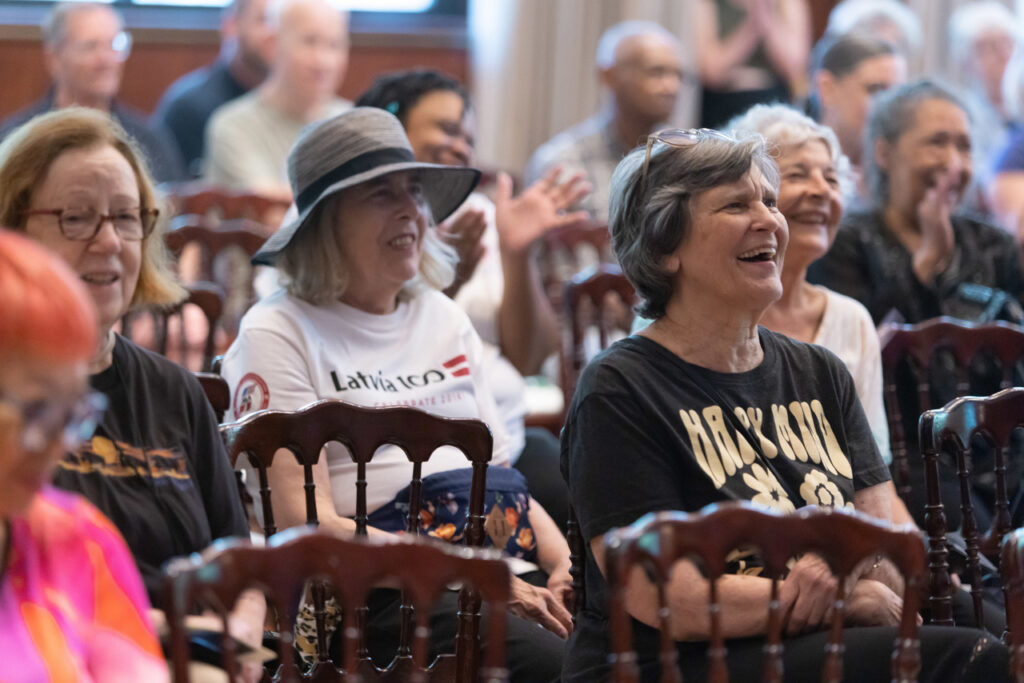
One of the very popular Bughouse Square events.
Newberry Trustee Carroll Joynes, author and co-founder of the University of Chicago’s Cultural Policy Center, who served as a member of the Search Committee, told us:
“I think the biggest task she is facing, and what I know she is very interested in beginning to work on right away, is how to make the broader Chicago community(ies) feel they have ‘ownership’ of the library, and that the library is something there to serve them, not just a core group of research scholars and advanced graduate students. Making authentic public engagement efforts a priority–knowing that, initially at least, it will take carefully planned creative efforts and planning to design exhibitions that will bring in those more diverse audiences. In other words, making it easy for people to find reasons to come and interact with the library’s extensive collections.”
The Newberry’s ambition to grow and diversify its audiences is mirrored in Tantillo’s accomplishments at UIC. Under her leadership, LAS realized its highest-ever undergraduate enrollment—a notable accomplishment given the shrinking college-age demographic. This growth, moreover, coincided with an increase in diversity: nearly half of LAS undergraduate students are from historically minoritized groups and nearly 40 percent are the first in their families to attend college.
“We want to broaden and diversify the audience of the Newberry and everyone to feel welcome, explore something of interest and enjoy programming around the exhibitions.”
At Classic Chicago Magazine, our interns, all students in classes taught by UIC’s English Department’s Coordinator of Internships and Lecturer Linda Andrews, have benefitted from Tantillo’s vision there: each talented, curious and dedicated to the importance of humanities education.
Among the new ideas for student involvement are a book collecting prize, encouraging students to be creative and exhibit what they have at the Newberry.
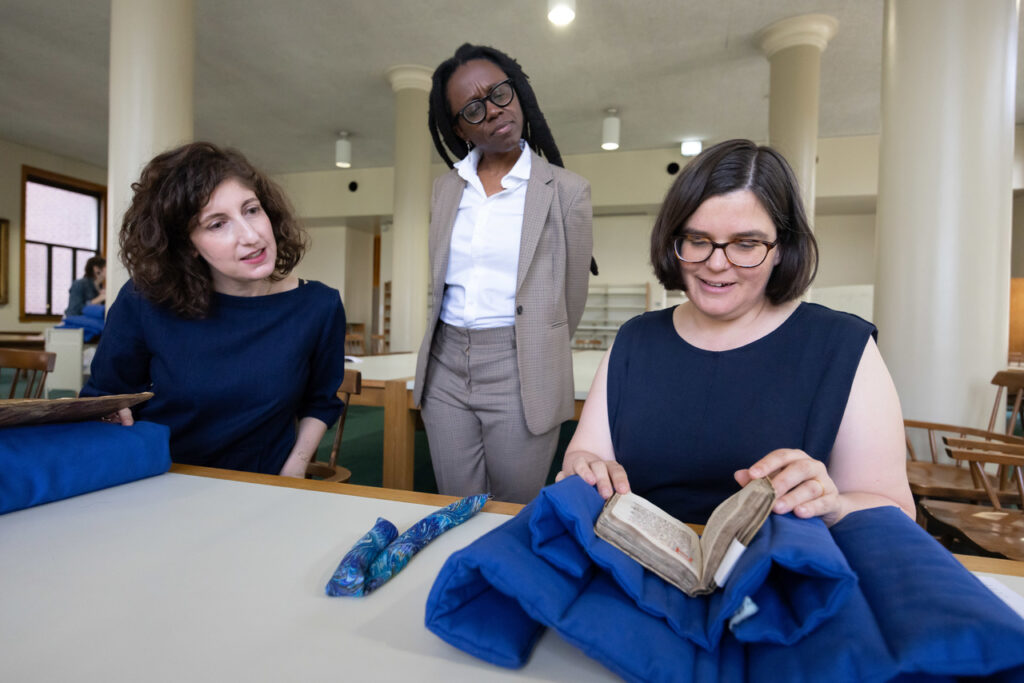
Photo of Newberry Fellows.
“We also offer seminars for students at Loyola, DePaul, Roosevelt and UIC that bring in undergraduates who are team taught by professors at these universities,” she said. “We currently also have a visiting class of undergraduates from Colorado College, who are studying here, and just welcomed a graduate-student organized interdisciplinary conference which focused upon Renaissance studies.”
“In August, Governor Pritzker mandated that all K through 12 schools in Illinois must teach Native American history,” Tantillo said. “We feel a great responsibility to share our collections with all educators.”
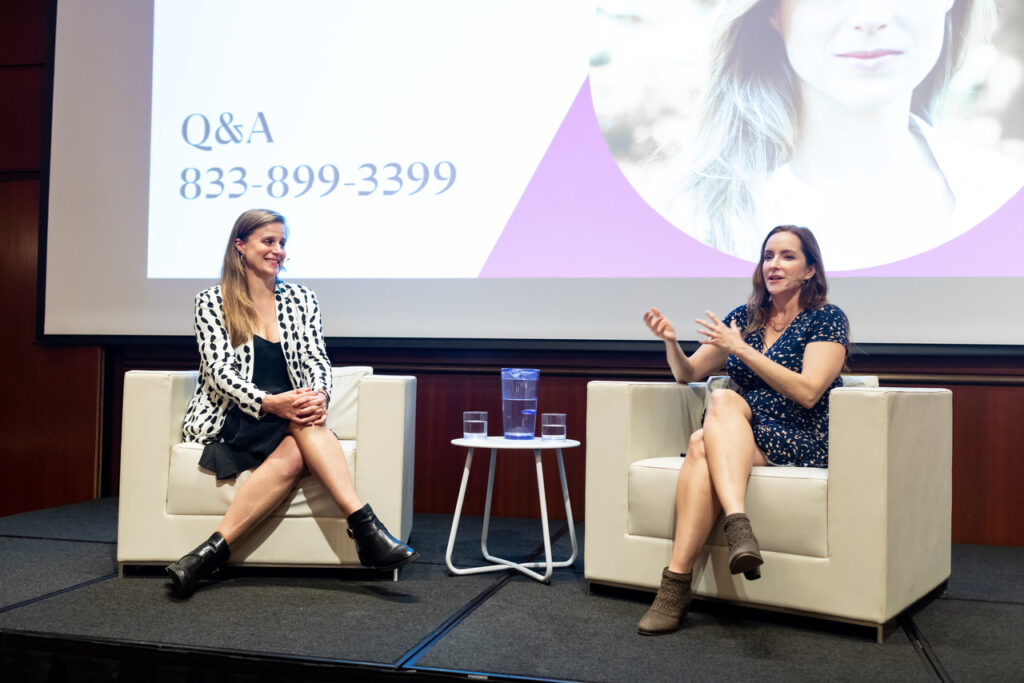
Authors Lauren Groff and Rebecca Makkai at a Newberry Program.
When the weather warms up, also planned is an open house at the Newberry with a block party, food trucks and doors open at the Library for everyone to come inside and get to know the collections.
Tantillo, who taught courses on 18th-century German culture and history of science, also served as President of the Goethe Society and has written three books on the German author. The Newberry was also the source for what Tantillo’s “mind-blowing discovery” when she learned that letters and manuscripts of Goethe’s daughter-in-law are in the Newberry collection. “These truly rare materials speak to the quality of our treasures here. I am really enjoying spending time with our curators seeing all the truly historical collections here which we want to share with broader and broader audiences.”
For more information about the Newberry, please visit newberry.org







